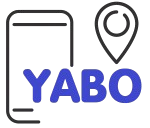Beauty Supply Store

Type: Trading (Retail)
Key Product/s for Sale:
- Skincare products (moisturizers, cleansers, serums)
- Haircare products (shampoos, conditioners, oils)
- Makeup (foundations, lipsticks, eyeshadows)
- Beauty tools and accessories (brushes, sponges, tweezers)
- Fragrances
Technology Considerations:
- Point of Sale (POS) system for transactions
- Inventory management software
- E-commerce platform for online sales
- Social media accounts for marketing and customer engagement
- Mobile payment solutions like M-Pesa
Market for the Product/s:
- Young adults and teenagers interested in beauty and grooming
- Working professionals looking for convenient access to beauty products
- Beauty enthusiasts and influencers
- Local salons and spas for wholesale purchases
Key Inputs into the Business:
- Materials: Beauty products sourced from local and international suppliers
- Labour: Retail assistants, social media manager (can start with owner managing)
- Equipment: Shelving, display units, POS system, marketing materials
Where to Get the Products for Cheap Wholesale Prices:
- Wholesale markets in Nairobi (e.g., Kamukunji, Eastleigh)
- Online wholesale platforms (e.g., Alibaba, Jumia)
- Direct deals with local manufacturers and distributors
- Beauty trade shows and exhibitions.
Product Preparation Process:
- Research and select popular and high-quality beauty products.
- Establish relationships with suppliers and negotiate wholesale prices.
- Stock and organize products in the store and online.
- Regularly update inventory and reorder stock as needed.
- Create attractive displays to showcase products.
Quality Considerations:
- Source products from reputable suppliers to ensure quality and authenticity.
- Regularly check for product expiration dates and damages.
- Train staff on product knowledge to assist customers effectively.
- Monitor customer feedback and address any quality issues promptly.
Cost of Investment:
Initial stock purchase: 20,000 KES to 50,000 KES
Store setup (shelving, displays): 10,000 KES to 20,000 KES
POS system and software: 10,000 KES
Marketing and branding: 10,000 KES
Total estimated cost of investment: 45,000 KES to 90,000 KES
Required Operational Infrastructure:
Small retail space or kiosk in a busy area
Storage space for inventory
Basic office setup for administrative tasks
Equipment: Shelving, display units, POS system.
Most Suitable or Viable Location of the Business:
Urban areas with high foot traffic
Near universities, colleges, and residential neighborhoods
Shopping malls and commercial centers.
Potential Sources of Investment Capital:
- Personal savings
- Loans from family or friends
- Microfinance institutions
- Youth entrepreneurship grants and programs
Requirements for Effective Management:
- Good organizational and inventory management skills
- Strong customer service and communication abilities
- Basic accounting and financial management knowledge
- Marketing and social media skills.
Role of Mobile Phone and ICT in the Business:
- Mobile phone for communication with suppliers and customers
- Social media for marketing and engagement
- E-commerce platform for online sales and order management
- Mobile payment solutions for convenient transactions
Statutory Regulations and Licenses:
- Business registration with the local authorities
- Trade license from the county government
- Compliance with health and safety regulations
- VAT registration (if applicable)
Pricing:
Competitive pricing based on market rates
Regular promotions and discounts to attract customers
Bundle offers for multiple product purchases
Profitability:
Profitability depends on factors like product demand, pricing strategy, and operational efficiency. With effective marketing and quality products, the business can achieve profitability within the first year.
Next Steps to Take:
- Conduct market research to identify popular products and suppliers.
- Secure a retail space in a strategic location.
- Purchase initial stock and set up the store.
- Create social media profiles and start marketing the business.
- Develop an e-commerce platform for online sales.
- Launch the business with a promotional event or discounts.
- Monitor sales and customer feedback to refine strategies and improve offerings.

